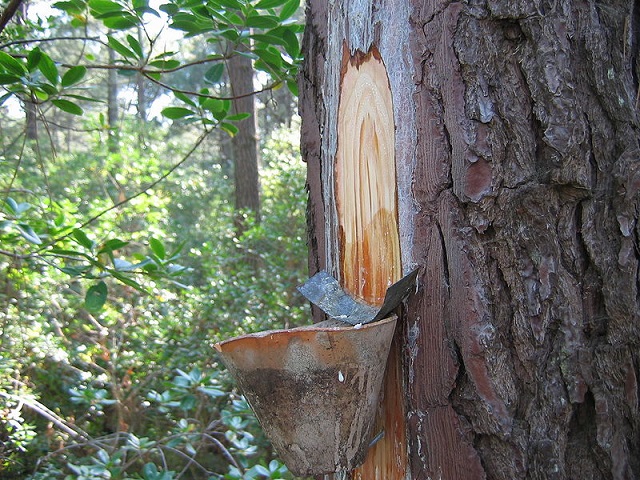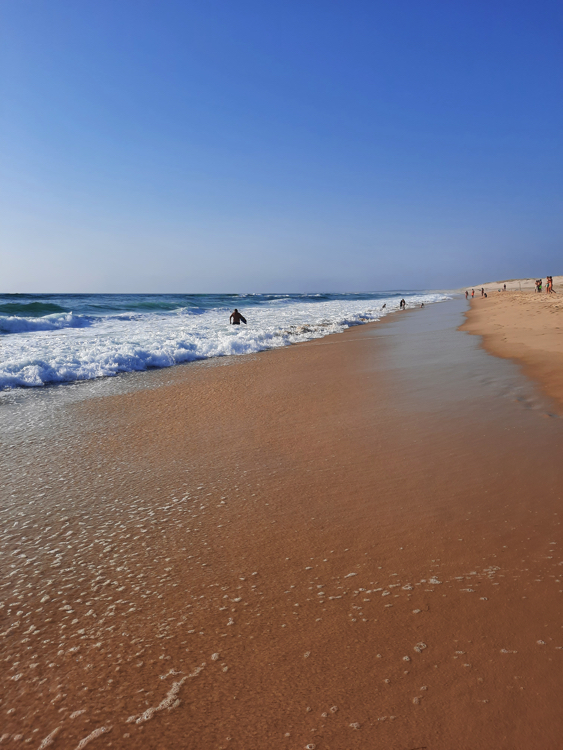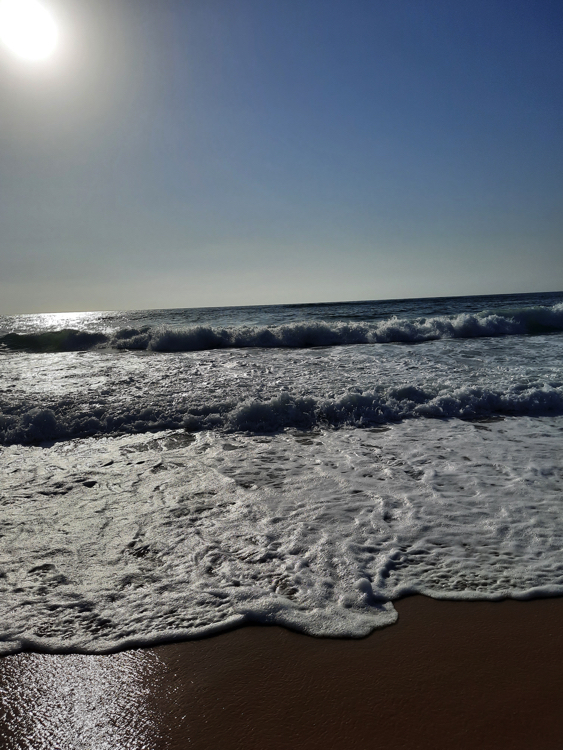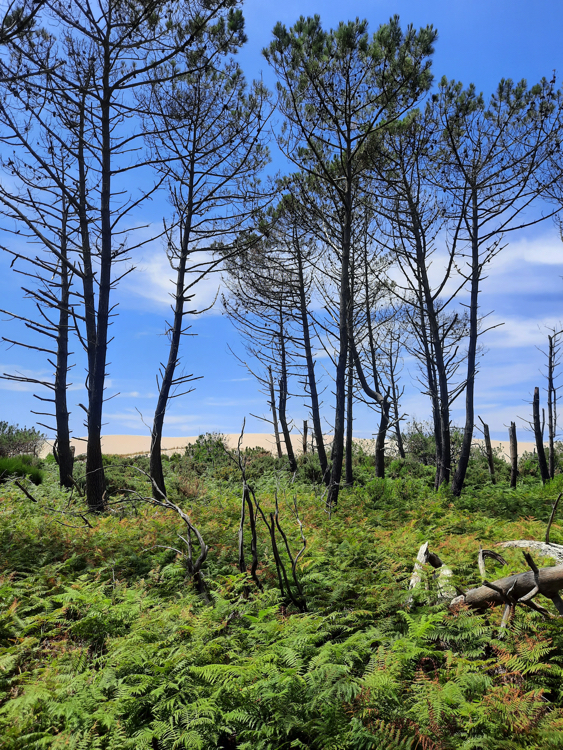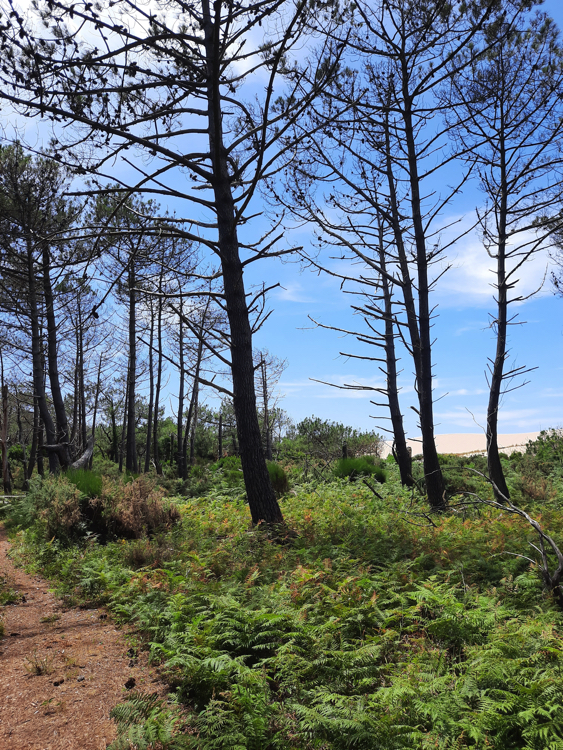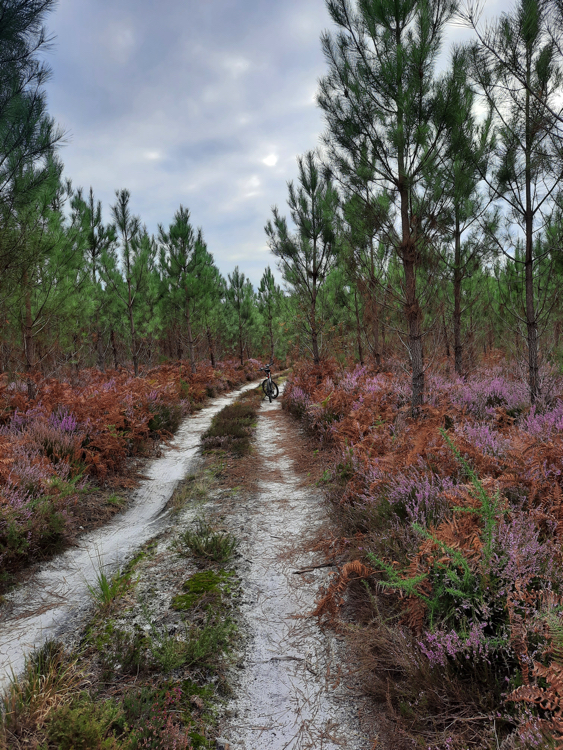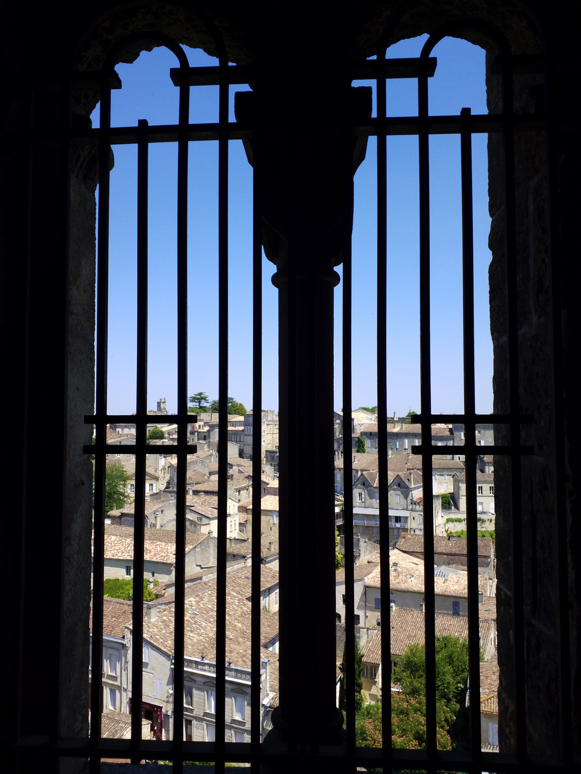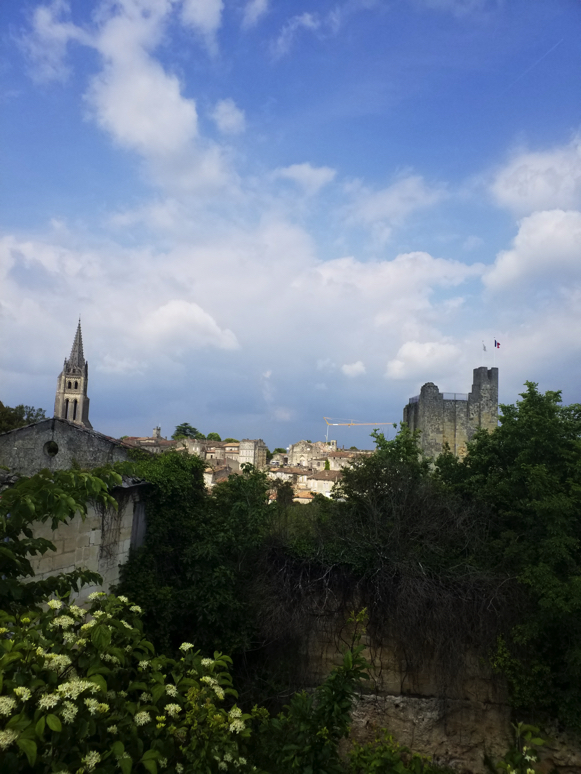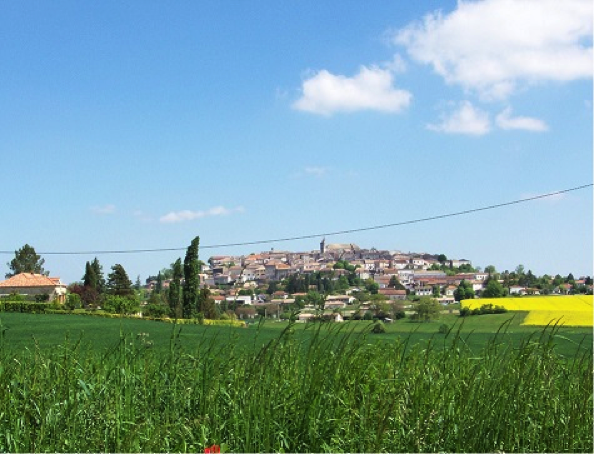The Landes Forest
The Landes gate
You enter the Landes where you can enjoy the magnificent Forests of Maritime Pines!
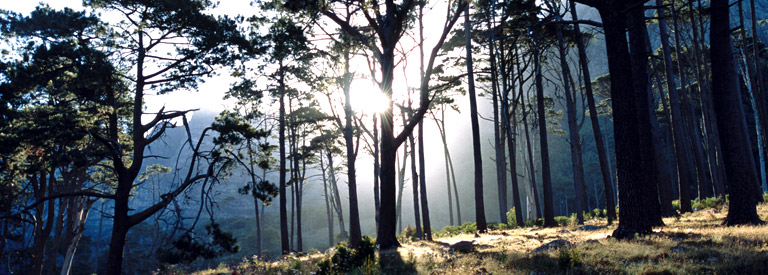
The Landes forest (in Gascon: las lanas) of Gascony is a forest massif in the south-west of France. Covering an area of nearly one million hectares, it is the largest artificial forest in Western Europe.
Bordered by the Atlantic Ocean (Silver Coast), it forms a vast triangle covering three departments (Gironde, Landes and Lot-et-Garonne), whose summits are materialized by the Pointe de Grave (to the north), Hossegor ( to the south) and Nérac (to the east).
Mainly private, it includes a few state parts located near the coastal barrier.
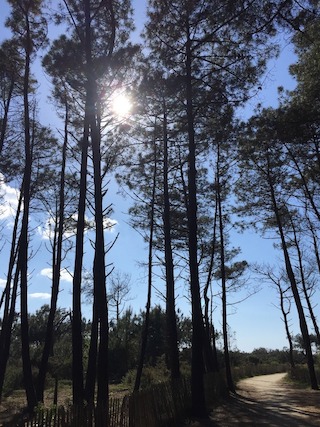
REGIONAL NAMES
Pinhadar (pronounced "pignada") "massif of planted pines" in the Gascon language (masculine) which is a close relative of the French word pinède, first attested in 1842, and borrowed from the Occitan Provençal pineda.
GEOGRAPHY
The Landes forest (called Landes de Gascogne, and formerly Landes de Bordeaux) extends over a large part of the French departments of Landes and Gironde. It also spills over into the Lot-et-Garonne department. The Landes massif gives birth to a few rivers (the Leyre, the Boudigau, etc.) and rivers (the Ciron, the Gat mort, etc.).
Important towns nearby are Bordeaux, Mont-de-Marsan, Dax and Bayonne. The forest massif is bathed in the west by the Atlantic Ocean (Bay of Biscay). The coastline thus formed bears the name of Côte d'Argent.

Here is an official link, click and enjoy your visit !

ESSENCES
Maritime pines
The plantations are mainly made up of maritime pines. They currently cover an area of approximately 950,000 ha. Unlike many other European forests, it is almost entirely made up of planted and industrially exploited forest. Massive pine planting was initiated in the Pays de Buch to stop the spread of mobile sands and clean the soil from the XVIIIe century. These plantations result in very observable characteristics and measurable consequences:
We can observe plots where all the trees were planted simultaneously and therefore have the same age and the same size (unlike a primary forest).
The plots are traversed by wide cuts and paths (intended to limit the spread of fires and to facilitate the approach of firefighters) which crisscross the forest for kilometers. These wide cuts and paths are called firewalls.
While walking in this forest, we find multiple traces of thinning, clear cutting (in particular, stocks of wood cut along the road).
Oak trees
However, other species coexist with pine, including oak, present in several forms:
* the forests along the Landes currents, outlets of large lakes and ponds, the pedunculate oak (or white oak) remains the dominant species
* tauzin or black oak is characteristic of airy and dry moors
* cork oak coexists with pine on the southern coast of the Landes (from Pyla, and especially in Marensin), as well as on the eastern edge of the massif in Lot-et-Garonne
* the holm oak is sometimes present on the coast of the Gironde (from Pointe de Grave to Cap Ferret).

DANGERS
Fires
There is specific equipment for fighting forest fires: observation towers, water storage basins, paths, etc.
The number of fires and their severity has decreased considerably since the last disasters of the 1950s and 1960s, in particular thanks to the installation of firewalls.
Firewalls are gaps that are supposed to create natural barriers against the spread of flames. Their width must be greater than the length of two lying pines, so as not to transmit flames in the event of a fire.
A vast network of firebreaks was put in place in the forest area following the major fires of the 1950s during which more than 300,000 ha of forests were devastated.
Forest health
Monospecific forests are more fragile in the face of climatic hazards and the risk of proliferation of invasive or destructive species (fungi, insects, etc.).
The forest is the subject of regularly updated biotic assessments, under the aegis of the DSF (Forest Health Department) and experimentation aimed at making afforestation more complex in order to increase its ecological resilience.
STORMS
Storm Klaus crossed southwestern France on Saturday January 24, 2009, causing extensive material damage. Having just recovered from storm Martin (December 1999), forestry workers are once again seeing their maritime pines and other species uprooted or severed. Thus, according to the estimates of the National Forest Inventory (IFN), 26% of the Landes forest experiences more than 40% of surface damage. A cartographic inventory on the Landes massif is carried out by the IFN.


ESSENCES
Economic impacts
This industrial forestry disrupted by short-term storms has seen its profitability questioned. It is also costing the community dearly through the subsidies granted for its survival.
Ecological impacts
Knowing that the roots of a hectare of maritime pines suck 45 tons of water from the water table per 24 hours, (this water then being evapo-transpired by the aerial part of the tree) the disappearance of part of these Intensive forest crops could restore some wetlands and the associated ecosystem.
A minority of the heathlands are natural. According to the pollen deposits found, these areas were covered with trees. Old land clearing, then ill-advised cultivation techniques (burn-out, bunkering, burning, turning of the soil), led to desertification and therefore the abandonment of these lands. The resilience of the old forest ecosystem having been exceeded, only the moor could take root.
On these ruined soils, the cultivation of pines seems the most interesting, since these trees are easily established and the exploitation period is very short.
However, like all mono-specific crops, those of pines make economic sense in the short term, at the cost of a negative ecological balance.
The coniferous forest is the only one that can be established in areas where the conditions are too extreme for the deciduous or mixed forests. The monoculture of conifers in all other places is therefore unnatural. It brings about the podzolization of the soil, that is to say a sterilization of the topsoil of the soil by the systematic leaching of the nutrients found there12. At a certain depth, the substances carried away concentrate and form alios, the soil there is hard and impermeable like stone. Compared to other types of forests, those composed only of conifers have a very poor biodiversity, because their litter is toxic.
A pine tree has rapid growth. It is a quickly profitable source of organic matter for industry: it can be used from the age of 40.
In nature, the coniferous forest provides a cover which allows, when the climate is favorable, the establishment of acid-loving deciduous trees (a mixed forest sets in). This is why the conifers of pioneer plants are also called. However, unlike softwoods, hardwood litter is non-toxic, which attracts extraordinary biodiversity. The biological activity of the soil, therefore the rise and maintenance of nutrients in the topsoil of the soil, intensifies to the point of fertilizing it over the years.
To restore these soils, hardwoods are essential.
STORIES
Part of the Landes forest is of natural origin. Certain areas of the Gascon coast were already forested two thousand years ago and occupied nearly 200,000 ha. These massifs were found near Lacanau, Arcachon, La Teste de Buch, Biscarrosse and in Marensin. The first techniques of gemmage were developed in these forests very similar to those which one knows today. Maritime pine, an endemic species, was the predominant species. 
Shepherd in the moor
However, most of the territory now occupied by the Landes forest was a wetland inhabited and worked, even owned in common until the XVIIIIe century by a population of sheep farmers. The photos of the last peasants of this region such as the Landes shepherd perched on his stilts, are witnesses of this mode of existence, then viable for the greatest number: the agro-pastoral system made it possible to feed families by making a profit from the land moorland, and was practiced until the massive establishment of pines. This signed the expropriation and disappearance of these populations, who recycle themselves as best they can in the timber and gemmaking industry. (After several unsuccessful attempts at alternative “valuation” of these lands, which were already exploited, it was finally maritime pine, perfectly suited to these regions then presented as “interior colonies”, that the State entrusted the task of populate the Landes plateau by planting large numbers of seedlings, a sort of “major works” of the time.)
Agro-pastoral system in the Landes de Gascogne
The desire to establish the forest is due to several reasons which emerged at the same time during the XVIIIIe century. The first was to fix the moving dunes of the coast which threatened the villages. A famous example exists, the burial of the church of Soulac. The Captals of Buch undertook fixing work in La Teste, but money quickly failed these small local lords who could not extend their fixing system to the whole of the territory. The engineer of Bridges and Roads Nicolas Brémontier learned about the work undertaken on the coast, which he took over.
Fixing the dunes in Aquitaine
On the strength of his influence in Paris, and listened to by big investors (resin derivatives would be essential in the industrial revolution), he convinced the government of the need to plant maritime pines in the Landes. Finally, the law of June 19, 1857 sounded the death knell for the agro-pastoral system, and gave birth to the great forest of the Landes that we know today.
Law of June 19, 1857
Publicly, the planting of maritime pines in the interior was presented as essential to "clean up the swamps and improve hygienic conditions" it was said at the time. This was not unanimous, but the population of the time was never consulted.
The first generation of pines from the second half of the XVIIIIe century reached maturity at the start of the 20th century. The gemmage process has been extended to all of Landes Gascony, and has been modernized and industrialized. Thousands of hectares of pines were now exploited to extract "white gold" from the Landes de Gascogne, used to produce turpentine and rosin.
Tapping
But this forest has been planted piecemeal, without overall coherence at the scale of the territory. The pieces of pine trees are huge, very dense and the trees are randomly distributed. Fatally, fire devastated the Landes forest in the middle of the XXe century. One of the most famous examples is the fire of August 1949 which devastated thousands of hectares between Bordeaux and Arcachon and claimed 82 victims. In 1950, nearly 50% of the forest went up in smoke.
Once replanted, the second generation of plantations will be very different from the first. Plantations are rationalized, pines are planted in rows and large firewalls prevent the spread of fire from one plot to another and access the heart of the pine pieces in the event of a fire. The forest takes on the face we know it today on the Landes plateau.
Gemstone pine
At the same time, tapping is gradually disappearing, in the face of competition from countries where labor is cheaper and especially competition from petroleum products which replace rosin and turpentine. In 1990, gemmage disappeared definitively from the Landes forest, after more than 2000 years of existence. The Landes forest, managed by mechanical processes, only generates a minimal fraction of the jobs it created in the 19th century (hence the depopulation of the Landes department between the 19th and 21st centuries. wood processing can be found in Facture / Biganos, Mimizan and Tartas.
Forestry
In the 1970s, certain parts of the forest gave way locally to intensive agricultural operations (in particular for the cultivation of corn, which consumes a lot of water).
In 2009, Storm Klaus created windfalls that were expensive to absorb and were conducive to the spread of fires. It has given rise to the release of large sums to support the timber industry and the forest municipalities of the Landes de Gascogne, to a questioning of certain orientations of forestry (particularly cultivation method), or even of forestry itself: in front of the prospect of having to replant plots which will only become profitable after fifty years or so, some owners are trying to convert their land (intensive agriculture, solar energy production, etc.).
Today, the Landes de Gascogne forest straddles three departments (Landes, Gironde and Lot-et-Garonne). Its current area is estimated at around one million hectares, 9/10 of which are made up of maritime pines. But there are locally in the forest vestiges of the post-glacial afforestation of this part of the South-West: pine stands alongside oak, alder, birch, willow, holly. They are mainly found at the edge of waterways, particularly well-drained land. (This stump forest was probably more extensive until the middle of the Middle Ages, a time from which the establishment of a more humid and cooler climate and especially the clearings linked to the extension of pastoral activity and the need for construction timber will lead to the decline of forest areas between the XIVe century and the XVIIIe century).
INDUSTRY
After experiencing a significant boom during the first part of the XXe century, the wood and paper industries have become notable players in the regional economy.
A complete economic sector is organized around wood:
Wood stored by the roadside
* forestry culture
* sawmill
* paper mills (for example, Papeteries de Gascogne of the Gascogne group, where again the cellulose plant of the pine of Smurfit at Facture)
* woodworking and specialties (parquet floors, carpentry, etc.)
* packaging and paper processing
On the contrary, the harvest of the gem (pine resin collected from the tree), which relied on a labor-intensive collection, has almost completely disappeared in favor of more common chemical technologies. There are thus companies of transformation / chemical distillation like DRT which use the by-products of the exploitation of pine.
Before the middle of the XIXe century, only the extensive breeding of ewes in the moor, allowed the production of a fertilizer (bunkering) which allowed the cultivation of rye mainly in cultivation on ridges, to limit the influence of humidity during Winter. The disappearance of the moor by a generalized pine sowing led to the disappearance of this culture and of the shepherds on stilts who are the stereotype soon replaced by the tapper and his hapchot.
LITERATURE
Théophile Gautier wrote in 1840 a poem entitled “Le Pin des Landes”, published in the collection España.
In François Mauriac's Le Nœud de vipères, the protagonist's family was notably enriched by the afforestation of uncultivated moors at the end of the XIXe century.















